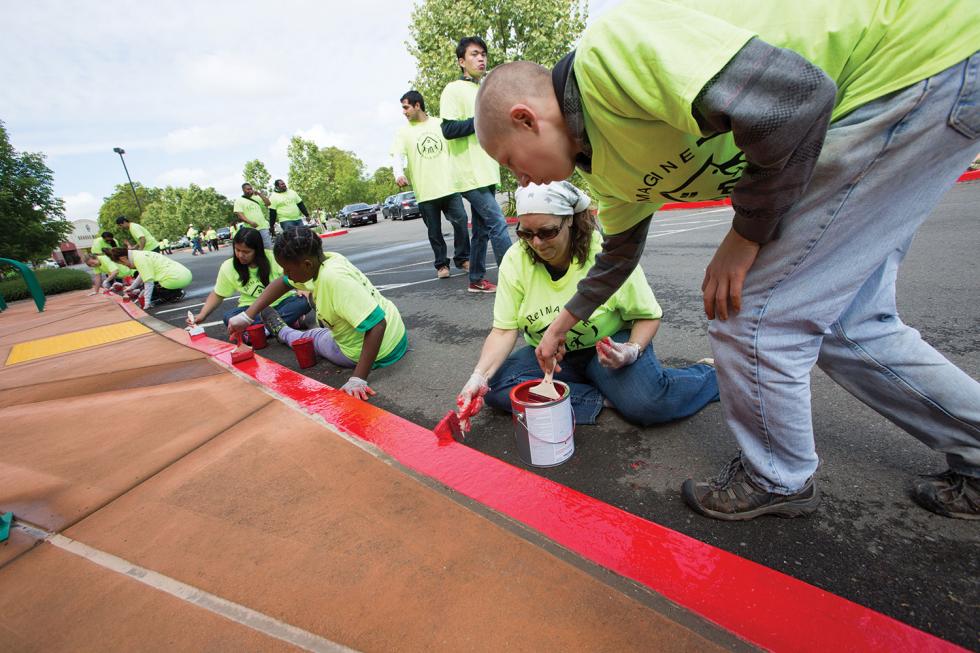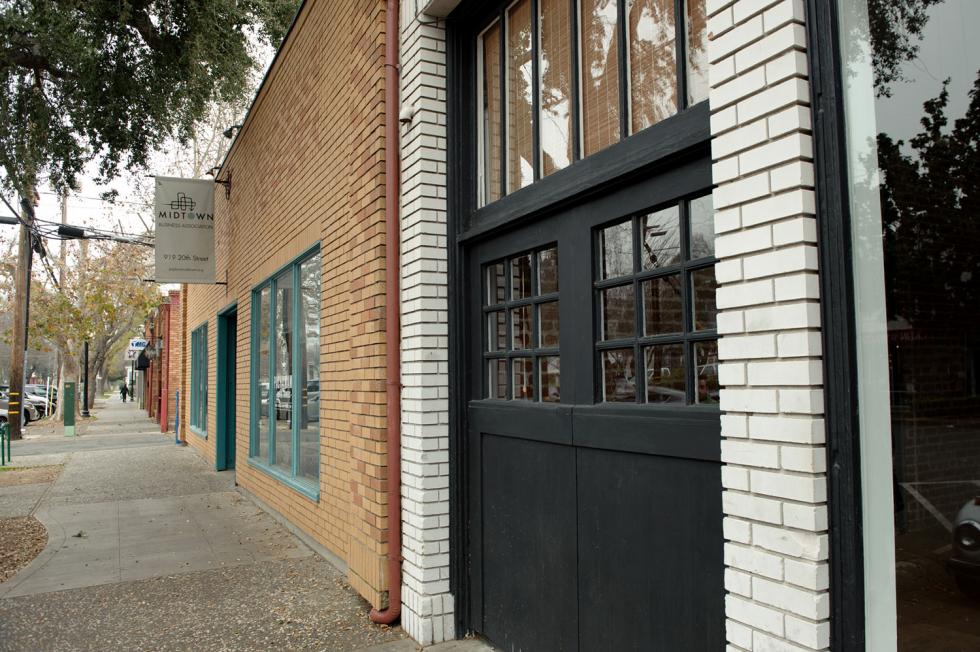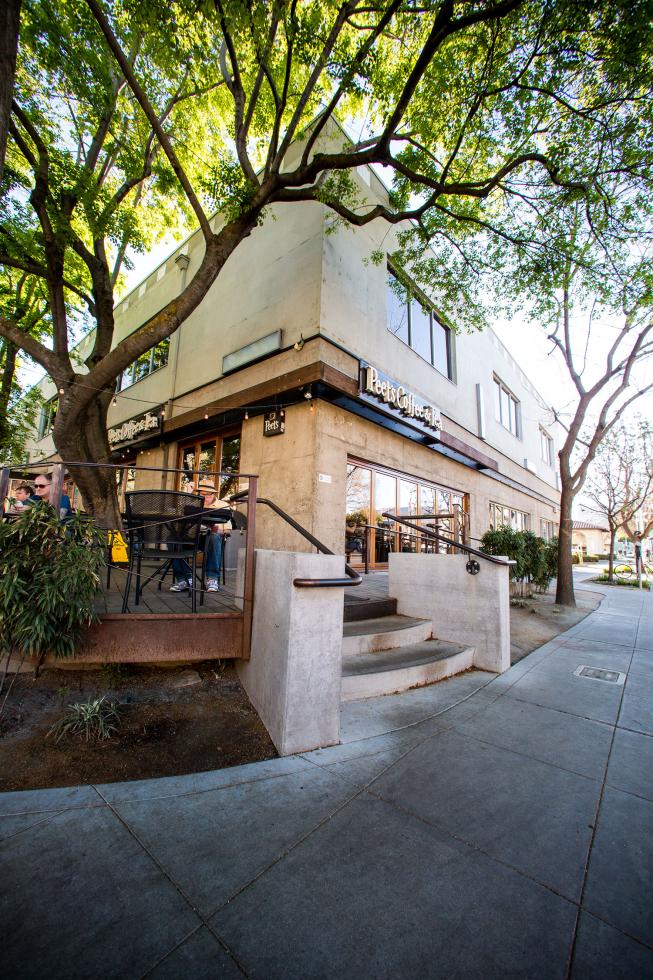Downtown Sacramento used to be a dump with a capital D. It was a place for work during the week, but crime and trash made people scatter on nights and weekends. That changed in the mid-1990s when property owners realized blight was bad for business and decided an urban overhaul was in order.
Leading the change was John Lambeth, a California special districts attorney and president of Civitas, which oversees the formation and renewal of financing districts. He studied urban revitalization projects across the country and discovered the Property and Business Improvement District model. These special districts formally organize property owners into a coalition. Members pay assessment fees, which fund services and programs such as security, maintenance, signage, lighting and special events.
Lambeth drafted legislation in 1994 to use this model to make Sacramento’s central business district a clean, safe, more hospitable place and to bridge the public and private sectors. Former Gov. Pete Wilson signed the bill into law and, in 1995, the Downtown Sacramento Partnership became California’s first PBID.
“At the time, some property owners thought they wouldn’t benefit and didn’t want the extra expense,” Lambeth says. “Now, almost all have turned the corner and said, ‘This is something extremely valuable.’”
Twenty years later, DSP represents nearly 180 property owners and more than 400 retail businesses. The 66-block district includes Old Sacramento, the Civic Center, Capitol Mall and the K Street Corridor. With the new Entertainment and Sports Complex slated to open in 2016, the urban core’s real commercial potential remains to be seen, says DSP Executive Director Michael Ault.
“Early on, we realized there were opportunities to dream of big projects, but we first needed to take care of core services and perception issues,” Ault says. “Now is the time to really take advantage of the groundwork that’s been laid. This is much bigger than the arena.”
In the past two decades, revitalization efforts downtown have sparked a regional PBID craze, with new districts launching everywhere from South Sacramento and Sunrise to midtown and, most recently, Roseville. Not just a tool for property owners, this collaborative trend has also triggered the formation of financing districts in niche industries, such as food, wine and tourism.
These financing models, however, aren’t permanent. Upon formation, districts can be set to run for five years. After that, members can vote to renew for up to 10 years at a time. It’s not always easy convincing property owners of the benefits. But most districts maintain a wide margin of support, says Lambeth. For example, Lambeth says, downtown property owners have renewed their PBID twice with a 90 percent ballot approval rating; DSP is up for renewal again this year.
“Folks that are paying into this really are in the driver seat,” Lambeth says. “They’re making day-to-day decisions. If something’s not working, they make changes. So it’s not surprising that they say, ‘Yeah, this has worked well for us.’”
5000 ReIMAGINE Mack Road volunteers paint fire curbs and refresh
landscaping at one of 26 project sites within the commercial
corridor on Mack Road.
(Photo: Gerry McIntyre)

Model Behavior
The PBID model is unique because it unites competing property owners to help enhance a business cluster. It’s a “rising tide lifts all boats” type of strategy. Marketing efforts and community events designed to attract the public can increase consumer traffic, which can boost sales for business owners.
But in some cases, property owners are large corporations based out of town. They lease space to commercial tenants but may not be present to witness the benefits of the district or understand how it works. That was the case with the Mack Road Partnership, formed in 2010 and up for renewal this year. The district went to business owners, usually tenants, early on to offer marketing services: building websites, creating Facebook accounts, running coupons in the district’s newsletter.
“There was always the suspicion of, when is the other shoe going to drop?” says Jenna Abbott, executive director of the Mack Road Partnership. “The tenants thought they were going to see an additional bill.”
That distrust started to disappear, Abbott says, after the business owners saw the newsletter, which included coupons from participating business, going out to 10,000 homes in the area. Building that relationship with both business and property owners is critical. And trust is the engine that drives the success of any PBID.
Property owners trust their assessment fees will be used for improvements, but strategies and services vary by location. The Mack Road Partnership, for example, focuses on partnerships with law enforcement and community development events to combat the area’s long history as a high-crime zone.
But the Sunrise area doesn’t have that reputation. As one of the first suburban districts to be established, the Sunrise Marketplace PBID, formed in 1999, aimed to turn an aging business corridor into a destination people drive to, not through. Initiatives to raise awareness have included beautification efforts (new street signs, banners, 80 palm trees) and special events (Sunrise At Night Concert Series and Sacramento Capitals tennis). Board members work with PBID staff to develop strategies to create awareness and drive traffic with the overall goal of increasing revenue for local businesses, says Kathilynn Carpenter, executive director of Sunrise Marketplace PBID.
“We voted to tax ourselves because we believe in the strength and marketing efforts of the BID,” says Christi Woodards, general manager of the Sunrise Mall and board chair. “It’s a great way for retailers, usually in competitive mode, to join hands as a unified force and provide services and products for the greater good of the community.”
Midtown Business Association’s office

Growing Season
Financing districts would fall apart without effective collaboration, both internally (among members) and externally (public sector connections). Consider the Midtown PBID, formed in 2007 and renewed in 2012 with a 76-percent ballot approval rating. The district, governed by a 24-member board of directors, pushes efforts to keep the streets safe and clean but also advocates on behalf of stakeholders on public policy matters.
“We’re seeing constant growth, and that’s a benefit and a challenge,” says Emily Baime Michaels, executive director of the Midtown Business Association, which delivers PBID services. “But we’re involved in policy conversations about how to increase housing density to accommodate those who want to live, work and do business in midtown. Our relationships with elected officials are strong, so we have the ability to be a powerful convener for the public and private sectors.”
The Association also oversees the Sutter Business Improvement District, an eclectic group of dining and nightlife businesses in the eastern blocks of midtown, including Biba and Harlow’s. This district, which receives funds from sales tax on food items, represents the current trend of niche markets adopting and tailoring the PBID model. In the past few years, the potential of collaborative marketing has led to the evolution of financing districts beyond property owners.
The Sacramento Convention and Visitors Bureau, for example, saw the success of DSP and sought to create its own customized version. The result was the Sacramento Tourism Marketing District. Developed by the Sacramento Hotel Association in 2001 and renewed in 2012, this benefit assessment district was designed to enhance funding for the marketing of local lodging businesses. The district generates $5.2 million annually to the SCVB’s marketing budget, which allows them to promote Sacramento as a tourist, event and meeting destination and it also funds the activities of Sports and Film Commissions, according to Steve Hammond, SVCB’s president.
In 2011, Rancho Cordova Travel and Tourism separated from the visitors bureau to form its own Tourism Business Improvement District. Now, every time someone stays in a hotel room within the city, that person pays an extra $1.50 fee per night, which goes to the TBID, says Marc Sapoznik, the district’s director. After a market study highlighted opportunities in sports tourism, the district started to host sporting events and tournaments, such as the U.S. Rowing Youth National Championships. Without TBID funding, Sapoznik says, the 72,000-square-foot Rancho Cordova Sports and Events Center wouldn’t exist.
But the district’s still finding its footing. After operating over a year without a staff, Sapoznik came aboard in September. “We were such a young organization,” says Lisa Jones, chair of the tourism board, who oversaw the district before Sapoznik started. “We didn’t want to just rush and hire somebody. We were trying to define who we are and what we’re looking for.”
Women compete at Sacramento State’s new track, a contribution of
the Sacramento Tourism Marketing District.

Coming of Age
Last July, the Roseville City Council approved the formation of its new PBID after 61 percent of property owners said they wanted one. Four months later, the council voted to contribute $28,000 toward that goal, which would be reimbursed by the city once the district gets established.
The PBID officially launched on Jan. 1 with an annual budget of $235,000, set to increase over time. President Doug Wagemann plans to provide area improvement above what the city supplies and hopes these efforts will increase property values.
“One of the challenges in talking with other PBID executive directors is property-owner apathy,” Wagemann says. “It’s very easy to be excited about it in the beginning, but then everybody goes back to normal daily living.”
To keep the buzz alive, Wagemann has been sending out letters, developing a Facebook presence and promotional materials. He recently completed a project survey to gauge the priorities of the 72 property owners. Marketing activities came back as the No. 1 need, followed by maintenance, beautification and security.
Lambeth believes PBIDs will continue to evolve in the future as districts mature and gain more credibility and, in turn, responsibility. “Across the country, you see that evolution,” he says. “I think more cities will contract with districts for services, and we’ll continue to see the private sector sitting around the table with the resources to really make an impact in commercial areas.”





Comments
You got it wrong and gave no credit to those who really restored and saved Midtown---the concerned and involved residents who were preservationists. There was a resident (resident liaison) on the board of MBA at the time. As a board it contacted Lambeth and paid for his services to get the PBID. The first vote failed but later it was revived and passed..
A great piece outlining the history and value of PBID's! More importantly, it shows what can be accomplished when people work together to tackle community issues. As someone who's worked Downtown/Midtown and been a regular attendee of Downtown Sacramento Partnership meetings (as a member of the public interested in seeing more DT/MT owner occupied housing stock) I've seen first hand how effective DSP's Clean & Safe program and other projects have improved our city's urban core. Thanks for sharing the PBID story!